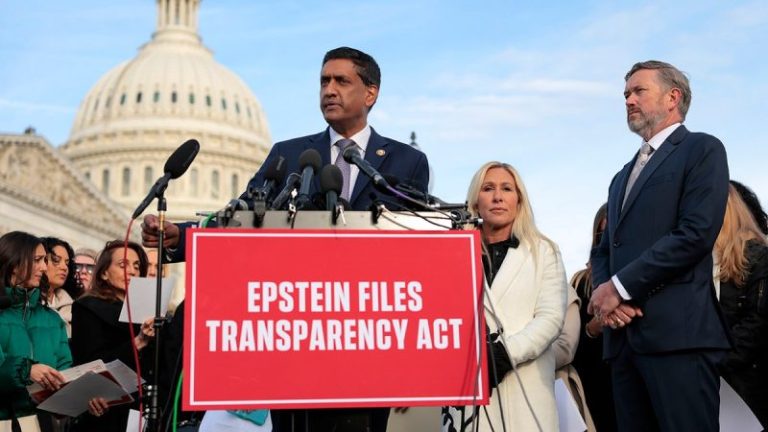Gold exchange-traded funds, or gold ETFs, have risen in popularity among investors who want precious metals exposure.
ETFs are similar to mutual funds in that they track assets such as stocks, bonds, currencies or commodities; a key difference is that ETFs can be bought and sold on exchanges, making them widely accessible. They provide considerable flexibility in implementing various investment strategies and in building investment portfolios.
Like other ETFs, gold ETFs are traded in the same manner as individual stocks, meaning that investing in the gold ETF market is similar to trading a stock on an exchange.
There are two main types of gold ETFs: those that track the gold price and those that hold investments in gold companies.
ETFs that follow the gold price give investors access to the yellow metal by holding either physical gold bullion or gold futures contracts. It is important to keep in mind that investing in the majority of gold ETFs does not allow investors to own any physical gold — in general, even a gold ETF that tracks physical gold cannot be redeemed for actual gold, although there are a few exceptions to that.
One more thing to keep in mind is that gold ETFs that hold physical gold are taxed as collectibles in the US, giving them a higher maximum capital gains rate, which is worth noting for investors in the highest tax bracket.
The other type of gold ETF invests in gold companies, providing exposure to gold mining, development and exploration stocks, as well as gold royalty stocks.
Read on to learn about the benefits of adding gold ETFs to your portfolio, the five largest gold ETFs by total assets and five top gold miner ETFs.
In this article
What are the benefits of gold ETFs?
Gold ETFs are fairly common today, and are a good choice for investors who want to invest in precious metals without trading gold futures or owning physical gold, such as gold coins or bars.
But gold ETFs are often considered a lower-risk investment, as they have a number of benefits for market participants and can open up a portfolio to diversification.
For example, physical gold is known for being a hedge against economic and political uncertainty, and owning shares of a gold ETF that offers exposure to the gold spot price provides investors with this same security without the hassle of buying and storing the yellow metal.
Since gold tends to rise when the US dollar is weak, purchasing a gold ETF could balance out any investment that has the potential to decline when the greenback does. Conversely, selling gold ETF holdings can be beneficial when the US dollar is making gains.
Gold ETFs that track gold companies give investors exposure to multiple companies in the space rather than having to choose specific stocks. This is an appealing option for those who want exposure to the sector without carrying the risks of investing in an individual stock.
Gold ETFs as a whole also offer security in that they are managed by yellow metal experts, so there is a better chance of making a profit than going it alone. Of course, it is important to keep in mind that, despite their less risky nature, gold ETFs are still affected by the rise and fall of the gold price.
Mutual funds are often compared to ETFs, but due to the fact that mutual funds can only be bought or sold at the close of the trading day, gold ETFs become more beneficial as they can be traded whenever the stock market is open, meaning movement is more liquid and not tied down by end-of-day trades.
Top 5 spot gold ETFs
The five gold ETFs below offer investors exposure to the spot price of gold by holding gold bullion. These options may be worth considering when it comes to getting exposure to the yellow metal’s price movements.
According to ETFdb.com, these gold ETFs were the largest gold ETFs by total assets as of November 13, 2025. The five largest gold ETFs all track the gold price.
1. SPDR Gold Shares (ARCA:GLD)
Total assets under management: US$139.14 billion
Unit price: US$380.58
The SPDR Gold Shares tracks the spot price of gold bullion and is determined by market forces in the 24 hour, over-the-counter market for gold. This market accounts for most global gold trade, and any quoted prices available to ETF investors reflect the latest available information.
Physical bullion comprises 100 percent of the ETF’s holdings, and its expense ratio is 0.4 percent. It offers investors a way to invest in gold that is much less costly than purchasing, storing and insuring bars or coins.
2. iShares Gold Trust (ARCA:IAU)
Total assets under management: US$64.22 billion
Unit price: US$79.04
Like the SPDR Gold Trust, the iShares Gold Trust ETF aims to track the spot price of gold bullion. Its expense ratio is 0.25 percent, and its holdings are allocated entirely to physical gold bullion. The aim is for the trust’s value to reflect the performance of the price of gold.
The physical gold the trust holds is in vaults in locations including New York, US; Toronto, Canada; and London, UK. Investors can purchase and sell shares through a traditional brokerage account throughout the trading day.
3. SPDR Gold MiniShares Trust (ARCA:GLDM)
Total assets under management: US$23.33 billion
Unit price: US$81.89
The SPDR Gold MiniShares Trust offers investors one of the lowest available expense ratios for a US-listed ETF backed by physical gold at 0.1 percent. This ETF represents fractional, undivided beneficial ownership interests in the trust, which holds only physical gold bullion and, from time to time, cash.
4. Abrdn Physical Gold Shares ETF (ARCA:SGOL)
Total assets under management: US$6.95 billion
Unit price: US$39.43
The abrdn Physical Gold Shares ETF aims to have its shares reflect the performance of the gold bullion price, minus the trust’s operating expenses, by holding 100 percent physical gold bars. This gold ETF has an expense ratio of 0.17 percent.
The gold backing the fund comes only in the form of London Good Delivery gold bullion bars refined on or after January 1, 2012, and held in secure vaults in London.
5. iShares Gold Trust Micro (ARCA:IAUM)
Total assets under management: US$5.52 billion
Unit price: US$41.84
The iShares Gold Trust Micro ETP is the lowest-cost physically backed gold ETP on the market with an expense ratio of just 0.09 percent. The fund is designed to provide exposure to the day-to-day movement of the price of gold bullion. The underlying gold bars are held in vaults.
Top 5 gold mining ETFs
These five gold stock ETFs are designed for investors looking to gain exposure to gold miners without the risk of holding individual gold stocks.
1. VanEck Gold Miners ETF (ARCA:GDX)
Total assets under management: US$23.89 billion
Unit price: US$79.18
The VanEck Gold Miners ETF provides investors with exposure to the largest global gold producers and royalty companies involved in the precious metals space and has an expense ratio of 0.51 percent. Nearly 90 percent of its holdings have market caps above US$5 billion.
This ETF’s top holdings include Agnico Eagle Mines (TSX:AEM,NYSE:AEM) with a weight of 7.9 percent, Newmont (NYSE:NEM,ASX:NEM) with 7.15 percent and AngloGold Ashanti (NYSE:AU,JSE:ANG) with 5.71 percent.
Holdings are rebalanced quarterly with qualified companies having a market cap greater than US$150 million, US$1 million in average daily trading volume and a minimum of 250,000 shares traded per month.
2. VanEck Junior Gold Miners ETF (ARCA:GDXJ)
Total assets under management: US$8.66 billion
Unit price: US$101.24
Similar to the GDX above, the VanEck Junior Gold Miners ETF provides investors with exposure to gold equities; however, it has a stronger focus on smaller gold mining companies and junior stocks, which carry higher risk, but also offer greater potential returns.
Its top holdings include Pan American Silver (TSX:PAAS) with a weight of 6.45 percent, Equinox Gold (TSX:EQX,NYSEAMERICAN:EQX) with 6.39 percent and Alamos Gold (TSX:AGI,NYSE:AGI) with 5.75 percent.
Holdings are reviewed in March and September, and rebalanced quarterly, with qualifications matching those for the VanEck Gold Miners ETF. Like the GDX, the GDXJ has an expense ratio of 0.51 percent.
3. iShares MSCI Global Gold Miners ETF (Nasdaq:RING)
Total assets under management: US$2.63 billion
Unit price: US$67.87
BlackRock’s (NYSE:BLK) iShares MSCI Global Gold Miners ETF provides investors with exposure to a diverse portfolio of global gold mining companies within the Morgan Stanley Capital International (MSCI) index and charges an expense ratio of 0.39 percent.
Top holdings in the fund include Newmont with a weight of 15.85 percent, Agnico Eagle with 13.33 percent and Barrick Mining (TSX:ABX,NYSE:B) with 8.92 percent.
4. Sprott Gold Miners ETF (ARCA:SGDM)
Total assets under management: US$611.45 million
Unit price: US$64.64
The Sprott (TSX:SII,NYSE:SII) Gold Miners ETF is an investment product designed to deliver returns that track the Solactive Gold Miners Custom Factors Index, which follows major gold equities listed on Canadian and US exchanges. The ETF is rebalanced quarterly and has a total operating expense of 0.5 percent.
Top holdings in the fund include Agnico Eagle with a weight of 12.41 percent, Newmont with 8.92 percent and Wheaton Precious Metals (TSX:WPM,NYSE:WPM) with 7.83 percent.
5. Sprott Junior Gold Miners ETF (ARCA:SDGJ)
Total assets under management: US$280.97 million
Unit price: US$76.56
The Sprott Junior Gold Miners ETF has also been designed to provide results tied to its underlying index, in this case, the Solactive Junior Gold Miners Custom Factors Index, which tracks companies with a market capitalization between US$200 million and US$3 billion.
The ETF is rebalanced semi-annually in March and September and carries a total management fee of 0.5 percent.
Top holdings in the fund include Bellevue Gold (ASX:BGL,OTC Pink:BELGF) with a weight of 5.04 percent, Novagold Resources (NYSE:NG) with 5.03 percent and Turk Altin Isletmeleri with 4.94 percent.
Securities Disclosure: I, Dean Belder, currently hold a direct investment in Equinox Gold.










